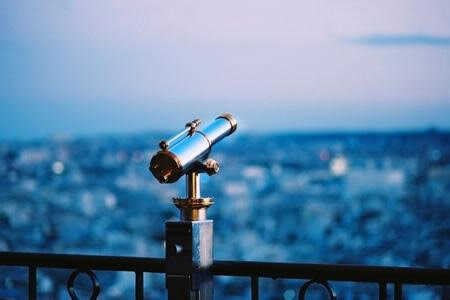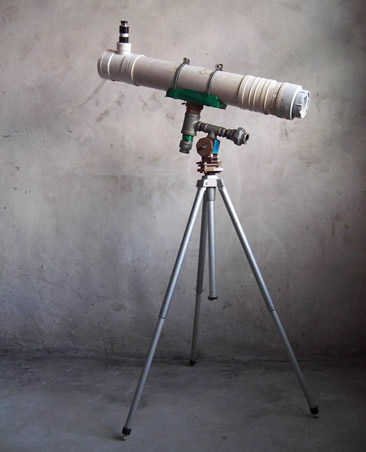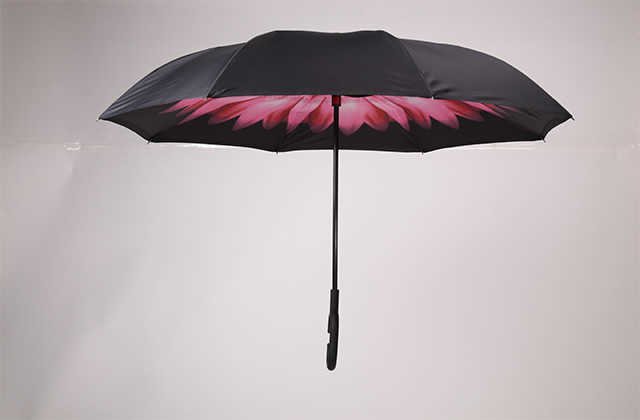[Telescope parameters] Astronomical Telescope optical parameters explain in detail how to see the astronomical Telescope parameter

The caliber of the objective mirror (D)
The diameter of the objective mirror is the most important parameter of the Telescope. Generally, it refers to the effective diameter, that is, the diameter of the light, that is, the diameter of the incident pupil of the Telescope. It is the main symbol of the Telescope conservation, not the diameter of the glass of the lens.Generally, it is represented by an inch (in) or millimeter (mm). The larger the diameter, the more light it collects, and the better the brightness and sharpness of the imaging.
(Note: 1 in = 25.4 mm)
Cumping (Ji Guangli)
This is the ability to collect light compared with the eyes to collect light compared to the eyes.It is directly proportional to the area of the caliber.First, the caliber (unit: mm) of the Telescope is divided by 7mm (the size of the eyes of the young people's eyes), and then the obtained commercial Square is the result of the light.For example, the light power of the 8 -inch Telescope is 843 ((203.2/7) = 843).
Focus (F)
The distance from the lens (or main reflector) to the focus, usually the unit is millimeter (mm).Generally speaking, the longer the focal length of the Telescope, the larger the magnitude, the larger the size of the imaging, but the smaller the field of view.For example, compared with a Telescope with a focal length of 1000mm, the magnitude and field range of the 2000mm focal length Telescope are 2 times and 1/2 of the former, respectively.If you do nt know the focal length, you only know the Focal Ratio, you can get the focal length by calculating: the caliber (the unit is MM) by the coke ratio is the focal length.For example, a lens with a diameter of 8 inches (203.2mm) and a coking ratio is F/10, and its focal length is 203.2 x 10 = 2032mm.

Relators (A) and Jiao Bi (1/A)
The ratio of valid diameter D to the focal length F is called relative diameter or relative aperture A, that is, A = d/f.This is a sign of the light mirror light power, so sometimes A is light power.Comet, nebula or galaxy, etc. The imaging illuminance of the surface celestial body is proportional to the Square (A2) of the relative caliber; the so -called linear celestial imaging illumination and relative caliber D (D2/f) of the so -called linear celestial body imaging such as meteor or artificial satellite (D2/F)Propopy.Therefore, when making celestial photography, pay attention to choosing a suitable A or Coking 1/A (that is, F/D. The camera is called the number or coefficient of the aperture).
Distinguish
For the Telescope, it refers to Dawes Limit.That is, the ability to separate two stars with a very close distance, the unit is angle seconds 1 (sex of Arc).The resolution ability is directly related to the caliber, that is, the greater the diameter, the better the resolution ability.The theoretical resolution ability of the Telescope is 4.56 Apart from the diameter (unit: inches) of the Telescope.For example, the resolution ability of a Telescope with a diameter of 8 -inch is 0.6 (4.56/8 = 0.6).However, the discerning ability is also related to the atmosphere and the visual acuity of the observer.
Contrast
Observe low -contrast objects, such as the moon and the planet, we expect the highest imaging contrast.The Newton Telescope and reflection refraction Telescope have a secondary reflex mirror (or auxiliary mirror), which blocked the launch light of some main reflective mirrors.Unless more than 25% of the main reflectors are blocked, the contrast of imaging will not be greatly affected.In order to calculate the secondary blocking rate, the formula (Pi) R can be used to calculate the area of the primary and secondary reflex lenses.Then it can be eliminated.For example, if the diameter of the 8 -inch Telescope is 2 inches, the blocking rate is 11.8%:
8 -inch main area = (pi) r = (pi) 4 = 50.27
2 -inch secondary area = (pi) r = (pi) 1.375 = 5.94
The blocking rate = 5.94 is 11.8% of 50.27
Observation conditions (atmospheric disturbances) are the most important factor affecting the contrast and planet details.
Airy Disk Brilliance Factor
When you look at the stars with a good Telescope, you don't see a bigger image.This is because the distance from the stars to our distance is too far (so that the light emitted is parallel light, and it is directly gathered in the focus of the plane), so even if it is enlarged many times, the stars should look like light spots, not, not, notLight spots or light balls.However, if the Telescope mirror is enlarged to the multiple of the 60 -diameter size (unit: inch), if you look closely at this time, you will find that there is a halo around the stars.The physical characteristics of the lapse and light.For further observation, when the stars are located in the middle of the Telescope vision, two phenomena will appear in the magnifying star map: a bright area in the middle, called Eli spot, and a weak ring surrounded by or or a series of surrounds.Diffraction ring.
When you increase the size of the caliber, the Eli spot will become smaller.The brightness of Eli (the image brightness of the light source star) is proportional to the four squares of the diameter size.Theoretically, when you double the diameter of the Telescope, its resolution ability will double, and its collection of light will increase by 4 times.But more importantly, you can also turn the area of the Eliga into 1/4 times, thereby turning the brightness of the astrology into 16 times.
Out of light
The output of the Telescope refers to the diameter of the round beam of the eyepiece, and the unit is MM.In order to calculate the pupils, the caliber (unit MM) can be divided by the magnification of the eyepiece.For example, a magnification of a Telescope with a diameter of 8 inches (203.2mm) with a 20mm eyepiece mirror is 102, then its pupil is 2mm (203.2/102 = 2mm).Alternatively, you can also get the focal length of the eyepiece to get the pupil size with the coking of the Telescope.
Magnification
The amplification multiple is one of the most important parameters of the Telescope.The magnification of the Telescope is actually the ratio of the focal length of two independent optical systems -telescopic mirrors and the used eyepiece.
The focal length (unit: MM) of the Telescope mirror can be obtained by the zoom distance (unit: MM) of the eye mirror to get the magnitude of the Telescope.For example, the focal length of the Telescope with a model C8 is 2032mm. If you equipped with a 30mm eyepiece, the magnifying rate is 68X (2032/30 = 68)..Because the eyepiece is replaced, the Telescope can have different magnification as needed.
In actual use, the Telescope has an upper and lower limit amplification rate.This is determined by the characteristics of optical and eyes.In ideal, the maximum magnification available for the Telescope is about 60 times its diameter size (unit: inch).If the increase rate exceeds this upper limit, the image often becomes dim, and the contrast is reduced.For example, the maximum magnifying rate of a Telescope with a diameter of 60mm (that is, 2.4 -inch) is 142X.When the magnification continues to increase, the sharpness and details of the image will decrease.The higher magnification is usually used for the observation of the moon, planets and Gemini stars.Those manufacturers who call the 60mm caliber Telescope can reach 375 or even 750, which is actually misleading consumers.In the evening, the lower limit of the long mirror amplification rate is 3 to 4 times the caliber.The lower limit during the day is 8 to 10 times the caliber.If the amplifier rate is lower than this lower limit, due to the projection of the secondary reflex mirror or oblique mirror, a black spot will appear in the center of the reflection refraction Telescope or Newton Telescope.
Extreme stars, etc.
On the sunny night, use Telescope to observe the darkest star near the ceiling, etc., called the extreme star (MB). Extreme stars and other effective caliber, relative caliber, the absorption coefficient of the objective mirror, and the atmospheric absorption of the atmospheric mirrorThe system is related to various objective factors such as the brightness of the sky background, and it is also related to the visual sensitivity of the observer.The experience expression given by different authors is slightly different.The simpler estimate is MB = 6.9 5LGD. D is used in CM as a unit. For photographic observations, extreme stars, etc. are also related to dew time and negative characteristics.There is a commonly used experience formula: MB = 4 5LGD 2.15LGT type T is the limit exposure time, regardless of the negligent law of mutual failure, and does not consider the impact of urban lighting.The convenient method of testing the limited star of the Telescope is to use the standard star of the target star in the central government of the Star Group, or use the standard star of the Arctic Star (NPS) to estimate or calculate.
Diffraction limit (Ruili judgment)
Near the focus, the residual wave of the split Telescope is far less than 1/4 of the incident light wavelength.Such a Telescope is suitable for an astronomical Telescope.Near the focus of the combination optical system, the wave image difference of separate optical components must be less than 1/4.When the wave ahead of the wave is reduced (1/8 or 1/10 wavelength), the optical quality will be greatly improved.
Close focus
This refers to the nearest distance you can see clearly in the near -land observation task.
Field angle ()
The sky areas that can be used by the telescopic mirror directly in the eyes of the observer are called the field of view or field angle ().The viewing field of the Telescope is often determined during design.The refraction Telescope is restricted by the limitation of the image and is restricted to the viewing angle. The reflection Telescope or refractive Telescope is often influenced by the sub -mirror size and restricted the viewing angle.However, for celestial photography, the field may also be restrained by the size of the receiver.The viewing rate of the Telescope is inversely proportional. The larger the magnitude, the smaller the view.
When the value of the unknown field, you can measure it by itself.Met the stars near the Equatorial Eachi with a Telescope, adjust the instrument, and make the star statue pass in the center of the field.The instrument does not move (without turning instrument clock), record the time interval of the star through the field of view, set to T seconds, the redttire of the star body is , the viewing angle is = 15tcos
Optics
Ivability is all factors that cause imperfections.There are several aberrations in the Telescope design, without the so -called perfect optical system.Optical design engineers must be able to balance all kinds of aberrations to get the desired design results.Here are some different looking portraits in different Telescopes:
Polysis: It often appears on the objective mirror that reflects the Telescope because the lens cannot focus on the light of different wavelengths (color) to focus.As a result, there was a circle of halo around the bright objects.This phenomenon often worsen when the sensitivity and diameter increase.
Ball difference: Make light through different caliber angles through the lens (or transmitted from the mirror) cannot focus on the same point on the axis.It makes the image of the stars not look sharp, but a vague light spot.
Comet: It is mainly related to the parabolic reflection Telescope, which affects the imaging of the external axis, and it is often more obvious at the edge of the field of view.The image of the stars looks like a V -shaped pattern.For high -quality instruments, the smaller the Jiao Bi, the more obvious the comets on the edge will be, but there will be no comets in the center of the field of view.
Portrait: The aberration is stretched from the horizontal position to the vertical position on both sides to the vertical position at the best focus point.This is often caused by poor production or assembly errors.
Field song: It refers to the plane formed by the precise focus of light, but a curved surface.The center of the noodles may be sharp and accurate, but the edges are not focused or opposite.




